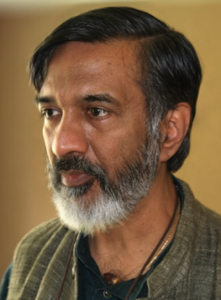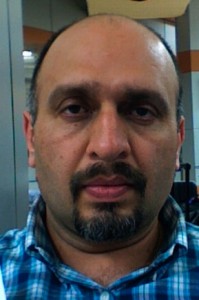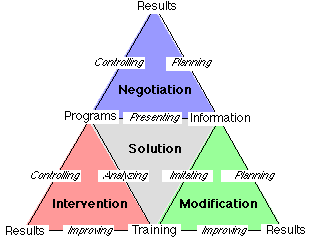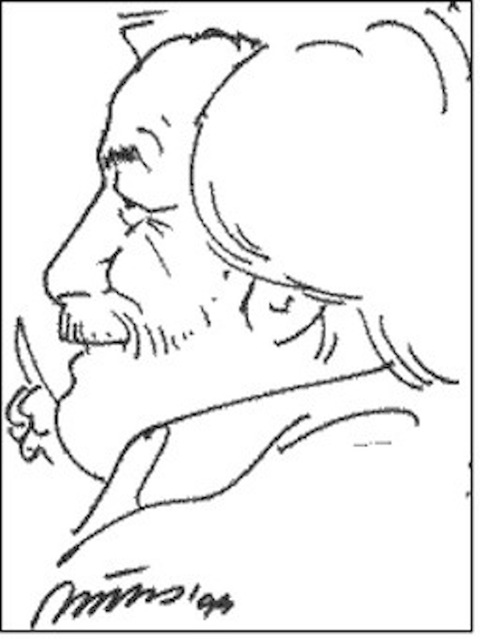Gangadeep Singh and Raghu Ananthanarayanan. Organizational Development and Alignment: The Tensegity Mandala Framework. New Delhi: Sage, 2013.
Russ Volckmann

Raghu Ananthanarayanan

Gangadeep Singh
About fifteen years ago, Prasad Kaipa, Chris Newham and I managed to get a highly innovative article published by the Society for Organizational Learning. A copy of this article can be found at: http://selfcorp.prasadkaipa.com/selfcorpnew/pyramidbuildingapplication.htm.
We spent hours, days of hours building on the foundation for the basic model created by Prasad and Chris. We needed to build a vocabulary for every edge, apex and face (and interior center) for the model. This was no simple task in that a tetrahedron has four faces, four apexes and three edges per face. Not only did each need to be named as the model was built, but also the relationships among faces, edges and angles (nodes) and their relationships at the apex. Sound complicated? Well it was. And frustrating as the hours and days of deliberation wore on.
Imagine my surprise when I opened the covers of a new book by Gagandeep Singh and Raghu Ananthanarayanan (ILR Associate Editor for India), entitled Organizational Development and Alignment: The Tensegrity Framework. Despite the log cab in model made of wooden matches on the cover, the model they were offering was built on the pyramid building article we had worked so hard on and, in my case, left much of it behind as my career shifted more and more toward executive coaching and teaching. Besides, the model was so complex that was hard to imagine that it could be used effectively beyond influencing the work of its creators. Here is what the tetrahedron looked like when it was unfolded.

http://selfcorp.prasadkaipa.com/selfcorpnew/pyramidbuildingapplication.htm
If you would like greater clarity on that I encourage you to go to the article.
The Tensigrity Mandal Framework is still complex, but it has been made highly intelligible and useful for examining the variables in organizational change and considerations for addressing them. See a representation of the model on page 71. The authors have changed the edges to the following with a question associated with each:
- Investing: How do we build capacity?
- Strategizing: How do we grow the customer base?
- Improving: How do we improve the delivery system?
- Valuing: How do we grow people?
- Serving: How do we delight the customers?
- Energizing: How do we achieve excellence?
At the four nodes are voices, those of wealth, customer, technology and employee. The four faces relate organizational redesign, redefining the organization, vitalizing the organization and competing as an organization. And the authors state,
We would like to emphasize that in the Tensegrity Mandala model, by definition, a continuous network of tension [among variables–Ed.] elements is clearly evident. None of the nodes is privileged in this respect—there is no central node or group of nodes. (p. 47)
That indicates that in considering approaches to organizational change and adaptability, leaving out elements of the model in the effort will likely contribute to a failure in achieving objectives. Given that a very large percentage of organizational change efforts fail to achieve those objectives, brining such a model to bear may be a significant asset. The metaphor of tension contributes to the dynamic nature of this model. There is no end state, but a series of voices being expressed through the tensions represented by the model. “Tensegrity is the pattern that results when push and pull have a Win-win relationship with eachother.” (p.10)
A dozen roles are played out in their model. These range from the “technology architect” to “business developer” or “solution designer” to “self-developer” and “customer” or external stakeholders. The roles can be performed at various times by any number of individuals in the life of a project or change initiative. Throughout, the performance of these roles assures the voices of wealth, customer, technology and employee are expressed and provide input into the change process. There are four leader roles: executor, strategist, institution builder and capacity creator. Each leader role focuses on sets of edges.
One element that is particularly exciting about their presentation is the inclusion of the notion of “shadow”. Drawing on Jung, they see shadow as “the inferior aspects of the psyche that we are not too proud of.” (p.96) I would add that much of the shadow is likely beyond our awareness and surfaces at best when we intentionally enhance our awareness and consciousness. The authors go on to state,
In the organizational context, our first definition of the “Shadow” is the set of realities and consequent pathos generated, which is experienced by multiple employees and other stakeholders, and yet is collectively repressed and edited out. (p.96)
It is one of key tasks of leadership is to work with the “Shadow”. Failure to do so results in pathologies and what Argyris called “the undiscussables, the undiscussability of which is undiscussable.”
These are some of the key themes in this highly original and useful book. They are carried through the entire discussion of the framework and examples of application, including confronting wicked problems. Thanks to the authors to sharing their work with us and for bringing my attention back to that work developed what seems like so long ago. Theirs is definitely a step forward. As we stated in the original article:
Organizations need to continue to develop models and methods that enable them to understand dynamic relationships among complex sets of variables. Change efforts risk being cosmetic or inadequate unless organizations are able to account for the complex web of influences among strategies, processes, and people. The Pyramid Building Approach (both as a systems model and holistic method) supports heightened awareness, increased clarity of perspective, and alignment among organization members in the face of complexity.
We hope the Tensegity Mandala approach furthers this work that is so important to organizations through the world.
Complex though the model may be, the authors offer a relevant and useful set of lenses for working with human systems and their change and development.

